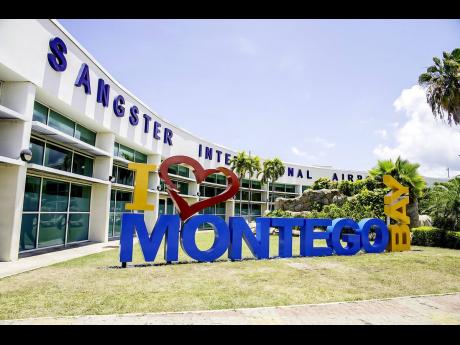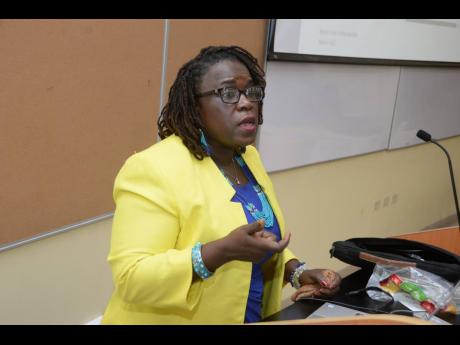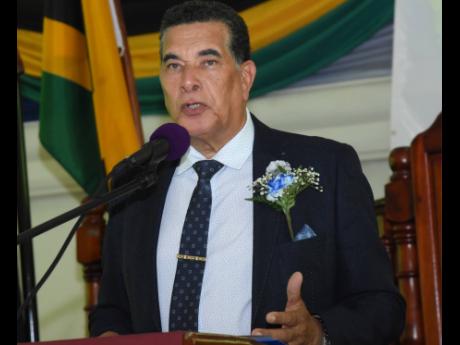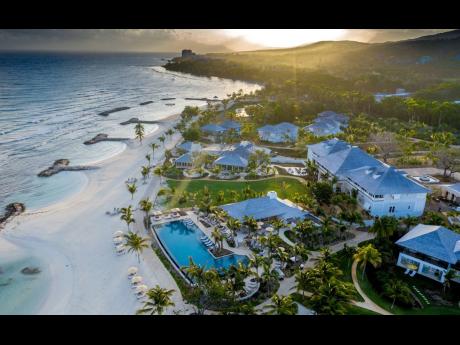Whither goest MoBay?
City’s potential being stymied by no commitment to central development road map
Despite its great potential, the development of tourist haven Montego Bay has been hampered by the reluctance of successive political administrations at the local and central government levels to continue work that was initiated by their predecessors.
Several projects that could elevate the city’s appeal have fallen victim to shifting priorities and political rivalries, leaving crucial initiatives without the sustained support needed for completion and stunting the Second City’s growth.
Professor of urban planning and public policy at The University of Technology, Jamaica, Dr Carol Archer, has seen some impressive plans for Montego Bay ditched because of minor technicalities.
“The IDB (Inter-American Development Bank) spent money to put together a team of professionals to create a plan to make the city resilient, recognising the importance of tourism, called the One Bay For All Montego Bay Sustainable Action Plan,” she told The Sunday Gleaner last week.
That plan was completed in 2015.
The initiative saw the St James capital being selected as a pilot project for a Smart City Integrated Operation and Control Centre (IOCC) – an initiative spearheaded by the IDB and the government of Korea.
This is after a survey was conducted to identify and aid cities with populations between 100,000 and two million people to create long-term strategies aimed at improving their environmental, urban, and fiscal sustainability.
The establishment of the IOCC, which was slated to include the installation of closed-circuit cameras across the city, was to aid in monitoring disaster prevention, traffic and crime management, under former Mayor Glendon Harris, of the People’s National Party, but things came to a standstill when the Jamaica Labour Party took control of the St James Municipal Corporation in 2016.
“There were certain build-outs from the plan, but after the change of administration, it was ignored, and we are now in a position that we are talking about all and sundry in a manner that is not coordinated,” Archer noted.
‘PIECEMEAL DEVELOPMENT’
The plan noted that visitors are attracted to Montego Bay’s lush landscape, the warmth of the sun and its people, but the future of the city is threatened by the ills of unchecked and rapid urban development and growth, putting a strain on resources.
“The city’s economic dependence on tourism also brings with it challenges, such as the vulnerability of its main economic product to extreme climate events; inaccessibility of many of its beautiful beaches to residents; and a social, economic, and physical divide between locals and tourists,” the document stated.
“At the same time, the tourism sector brings opportunities, such as attracting capital for investment. If approached correctly, Montego Bay can take these opportunities to find a new identity and emerge renewed,” the document continued. “It can become a better-planned city that is more compact and consumes less space and resources. It can be a city where places aren’t just spaces, where nature is valorised, where there is one unified community and not two separate worlds.”
An increase in job opportunities as more hotel rooms are added resulted in a steady inward migration, but the matter of housing has never been adequately addressed, noted Archer.
“We took a very long time to have the zoning plans approved. In fact, what we are doing now is playing catch-up,” she said. “Instead, we should have already determined how we want Montego Bay.”
Another plan done by the late urban planner Arline Dixon was also shelved.
“It took a long time to prepare the plan, paid for by the Government, but once the plan was prepared, it was then ignored, and then we began to do piecemeal development in some areas without considering the impact on other areas,” said Archer. “So, we see development in the hills, but when you pave the surfaces, water will have to go somewhere, and that has caused the issues with flooding in the town centre.”
Although the Government and private developers tried to address the city’s housing crisis through the development of schemes in Farm Heights, Cornwall Gardens, Catherine Mount, Catherine Hall, Westgate Hills, Rhyne Park, and Cornwall Courts, informal settlements remain an integral part of the city’s housing stock.
SHORTAGE OF COMMERCIAL SPACE
The urban centre is now saturated amid increased demand for residential and commercial space.
The St James Municipal Corporation is eyeing Retirement as a crucial part of an expansion of the boundaries of the city, but there is no update on a planned relocation of its problematic landfill, which should be a part of an ambitious waste-to-energy project to manage the approximately 1.5 million tonnes of waste generated locally each year.
“I don’t think we are in the position at this time to say whether or not the dump will be relocated,” said Deputy Montego Bay Mayor Richard Vernon. “We have to be working with central government because that landfill is a regional landfill, so we are just the host, but our position at the St James Municipal Corporation is that it needs to be relocated.”
As the demand for commercial space intensifies, stakeholders now regret the decision by the Patterson administration to establish a sewage plant on the now-bustling western side of the city.
Mark Kerr-Jarrett, managing director of Barnett Limited, said he was bullied into selling a section of Barnett Estate to the State, while protests from other local representatives were reportedly dismissed.
“We did not agree for the sewage plant to be placed there, but we never had much of a say either,” recalls now-State Minister in the Office of the Prime Minister – West, Homer Davis, who served for more than a decade as a councillor in the municipal corporation and now oversees major infrastructure developments in St James and other western parishes.
“But Montego Bay now has a say,” he added. “Right now, we have more persons from Montego Bay occupying senior positions on state entities and government boards than [at] any other time.”
TRAFFIC HEADACHE
In 2018, then Transport Minister Mike Henry announced a $50-million expansion plan for the MoBay Transport Centre, but this did not materialise.
Last year, Councillor Dwight Crawford said contracted transport operators in the BPO sector were among the key contributors to the long-standing traffic woes on Howard Cooke Boulevard.
He also charged that the practice by taxi drivers to pick up and set down passengers arbitrarily, sometimes in the middle of the streets, was posing a safety threat and affecting other motorists.
The situation is made worse by the fact that only a small amount of the 60 per cent of public passenger operators in Montego Bay make use of official transport centres, resulting in frequently choked streets.
Davis, a former mayor of the city, said that while the absence of a proper transportation hub is making it difficult for the local authority and police to maintain law and order, the Government is having difficulty getting the cooperation to utilise lands housing the People’s Arcade adjacent to the current facility.
“Successive governments have had a difficult time getting the level of support from agencies of government that control the resources in terms of lands for development,” the state minister said. “But if you ask me, and this is my personal position, we should have taken charge of the railway lands long time. We should not have allowed the railway lands to be occupied, the way it is presently occupied.”
Others agree that the Jamaica Railway Corporation (JRC) lands are ideal for a multimodal transport park, consolidating all of Montego Bay’s mini-transport centres into one grand central facility.
However, Vernon acknowledged that the JRC has plans for the 12 acres of land.
Social activist O’Dave Allen is bemoaning the blight in the city.
“Downtown Montego Bay, though a vibrant centre, is saturated, severely blighted and congested and has lost its aesthetic appeal,” Allen told The Sunday Gleaner. “The social life and physical conditions downtown are impacting negatively on visitors, residents and users alike. There are constant complaints of harassment, inadequate sanitation, lack of public facilities, ugly buildings and sites, broken sidewalks, inadequate parking and pedestrian walkways, ugly perimeter fences and overbuilding.”
SECURITY
Assistant Commissioner of Police Clifford Chambers, who heads the police’s Area One, indicated earlier this year that Montego Bay remains a security concern despite its popularity as a destination.
He believes the city can be modernised to become more responsive to the demands of the people.
Last year, the cops established ‘Operation Restore Paradise’ to push businesses, transportation operators, and the public to comply with the laws and regulations to bring order to the city.
Although the initiative was lauded, its effectiveness has waned and the cat-and-mouse game among street vendors, taxi operators, and agents of the state has resumed as old habits return with fewer resources being committed to the task.
Archer believes that key to shaping a better future for the Second City will be the use of technology to determine appropriate land use, efforts to encourage greater involvement of locals in decision-making, and the provision of the resources to execute projects.






